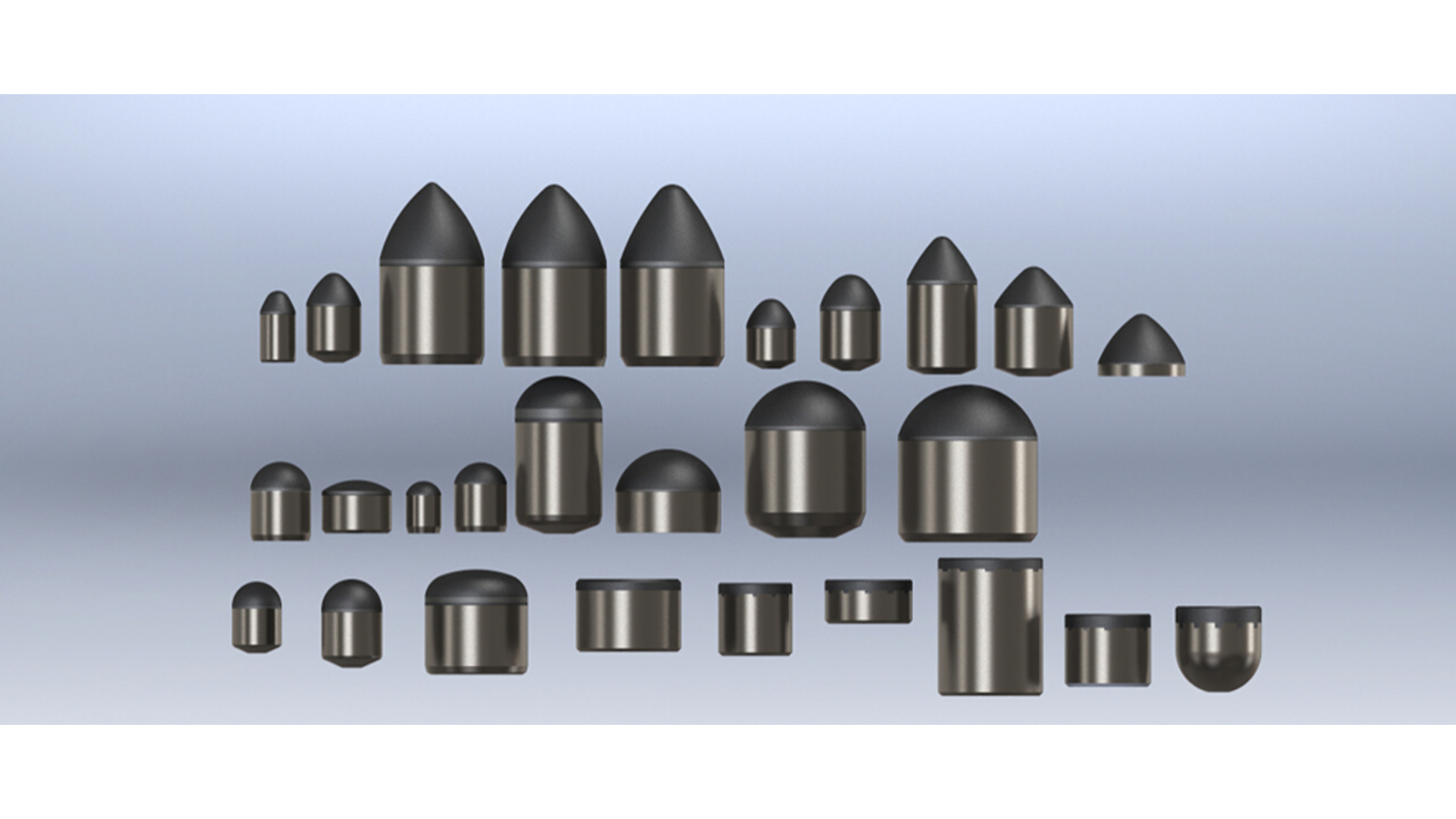Daimond Bearing
Sintered Diamond Technology
Sintered diamond combines extreme hardness, superior wear resistance, and excellent thermal conductivity, making it ideal for high-performance cutting tools. Unlike single-crystal diamonds, sintered diamond is formed by bonding many small diamond particles in random orientations. This structure prevents crack propagation, improves toughness, and ensures uniform wear.
Produced under ultra-high temperature and pressure, often bonded to a tungsten carbide substrate, PDC tools deliver exceptional durability and cutting efficiency in rock drilling, mining, and other demanding applications.
Diamond Surface Finishing
The extreme hardness of diamond makes machining and finishing highly challenging. In conventional machining, the tool is harder than the workpiece—but with diamond, the hardest known material, that’s not possible. It’s like trying to cut a wooden beam with a wooden saw.
To achieve precise final dimensions for polycrystalline diamond cutters (PDCs), specialized methods are used, including lapping, grinding, polishing, brazing, and precision cutting. These advanced techniques, developed over years of innovation, enable finishing PDC inserts to exact specifications despite the inherent difficulty of working with sintered diamond.
High-Strength Diamond Bearings

Polycrystalline diamond (PCD) is renowned for its exceptional thermal conductivity, low coefficient of friction, high fracture toughness, and other superior physical and mechanical properties. A bearing material with high thermal conductivity helps dissipate heat efficiently, minimizing localized temperature spikes that can cause bearing degradation. During start-up and shutdown, this property also reduces the risk of localized surface welding, which can lead to scoring or galling.
In sliding bearings, a low coefficient of friction is highly desirable as it lowers heat generation, minimizes power losses, and enhances operational efficiency. High fracture toughness provides outstanding resistance to raceway damage, even under extreme operating conditions. Furthermore, PCD’s exceptional hardness makes it highly resistant to abrasive wear from particles in lubricants or process fluids, ensuring a longer service life.
Thrust Bearings
PCD thrust bearings consist of a series of precision PCD inserts, typically brazed into carrier rings. A standard thrust bearing set includes both a rotating and a stationary ring, with the flat PCD surface of one in direct contact with the PCD surface of the other.
During operation, these PCD surfaces rub against each other, exhibiting extremely low friction—typically between 0.05 and 0.07. At higher speeds, friction can be further reduced as the bearings transition into mixed or hydrodynamic lubrication regimes. In hydrodynamic lubrication, a thin fluid film separates the opposing surfaces, achieving friction coefficients below 0.01.
The ultra-high hardness and strength of PCD enable these thrust bearings to handle very high loads while wearing at exceptionally low rates—often lasting from 1,000 hours to several years, depending on the application. They are especially well-suited for process-fluid-lubricated environments, including those containing abrasive particles. High-grade steel carriers are used to ensure maximum durability and performance.
PCD Bearing Capabilities:
- Handles specific loads of more than 22,000 psi (152 MPa)
- Operates at speeds ranging from 1 rpm to over 6,000 rpm
- Extremely low wear rate of less than 0.0004 inches per 1,000 hours (0.01 mm/1,000 hours)
- Friction coefficients between 0.07 and below 0.01
- Custom-built to match application needs with optimized performance
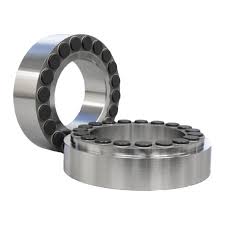
Radial Bearings
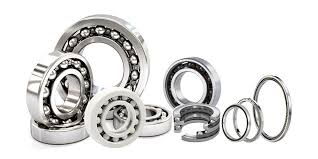
PCD radial bearings are constructed from a series of precision PCD inserts, typically brazed into carrier rings. A standard set includes both a rotating and a stationary ring, with the PCD surface on the inner diameter of one ring in direct contact with the PCD surface on the outer diameter of the mating ring.
Advanced manufacturing processes enable the production of PCD radial bearings with accurate diameters, tight clearance tolerances, and ultra-fine surface finishes.
During operation, the PCD surfaces of the rotating and stationary rings slide against each other, delivering extremely low friction—typically between 0.01 and 0.05. The exceptional hardness and strength of PCD allow these bearings to handle very high loads while wearing at a remarkably low rate, often lasting from 1,000 hours to several years, depending on the application. High-grade steel carriers further enhance strength and durability.
PCD radial bearings are particularly well-suited for process-fluid-lubricated applications, especially in environments containing abrasive particles. Even in abrasive-laden fluids, the PCD surfaces retain their geometry and show minimal wear.
Each PCD radial bearing can be custom-designed to match specific application requirements, with performance parameters tailored for optimal results.
Combination Bearing
Some applications require bearings that can withstand both thrust and radial loads. Polycrystalline Diamond (PCD) bearings can be manufactured to meet these demanding requirements. PCD inserts are assembled into carrier rings and finished with a tapered profile, with the taper angle optimized to handle either higher thrust loads or higher radial loads as needed.
In certain designs, PCD thrust and radial bearings are integrated into a single compact unit, reducing overall assembly size. In this configuration, the PCD inserts for both thrust and radial load support are placed in one carrier ring, rather than using separate rings for each load type. All PCD inserts are paired with high-grade steel carriers for maximum strength and durability.
Precision manufacturing processes ensure accurate surfaces, tight clearance tolerances, and ultra-fine finishes, enabling outstanding performance even under challenging operating conditions.
These bearings are custom-designed for each application, with performance specifications tailored to operational needs.
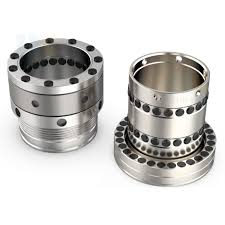
Daimond Powder
Cobalt Powder
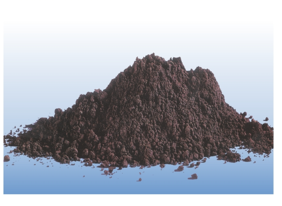
Principal Application
Diamond tools, cemented carbide tools, hard metals, glass industries, diamond polishing scaives.
Packing
1 kg packing available in cardboard box with inner LDPE bags sealed in inert atmosphere.
25 kg & 50 kg packing in metal drum with inner LDPE bags sealed in inert atmosphere.
EXTRA FINE COBALT POWDER
Fisher grain size 1.1 to 1.5 micron.
| Chemical Analysis | ||
|---|---|---|
| Co | 99.8% | Min. |
| Fe | 0.05% | Max. |
| Mn | 0.001% | Max. |
| Zn | 0.003% | Max. |
| Na | 0.03% | Max. |
| O2 | 0.6% | Max. |
ULTRA FINE COBALT POWDER
Fisher grain size 0.9 to 1.1 micron.
| Chemical Analysis | ||
|---|---|---|
| Co | 99.8% | Min. |
| Fe | 0.05% | Max. |
| Mn | 0.001% | Max. |
| Zn | 0.003% | Max. |
| Na | 0.03% | Max. |
| O2 | 0.8% | Max. |
Application
- Buttons for DTH bits.
- Drill steel inserts (DSI) for drill rods.
- Wire drawing nibs.
- Bar and tube drawing pellets.
- Wear parts, specialtips, blanks etc., as per requirement / drawing.
- Cold heading pellets.
Also, we produce tungsten metal and tungsten carbide powders, It is availablein different particl sizes.

REDUCED IRON METAL POWDER
Apparent Density : 2.4 - 2.5 g/cm3
Chemical Purity : 99.8 %
Hydrogen Loss : 0.8 %
Particle Size : 2-4 micron
Typical Application : Manufacturingof Diamond tools, ferrite cores, Sintered machine parts.
COBALT OXIDE POWDER
Assay (As Co) : 72.5 % Min
Fe : 100 ppm max.
Mg : 100 ppm max.
Ni : 150 ppm max.
Na : 050 ppm max.
Zn : 003 ppm max.
Particle Size : -300 Mesh
Typical application : Used in Manufacturing ceramics, glass, enamals, catalyst, inks, rubber, oil, greases, cosmetics food additives etc.
Tungsten Carbide Powder(WC)
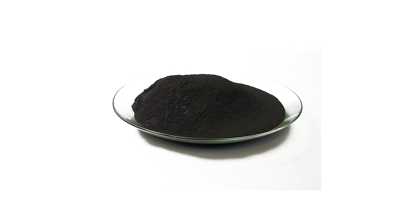
Physical Properties
| Av. Particle Size | 2.0 - 4.0 | 5.0 - 7.0 | 7.0 - 9.0 | 10.0 - 15.0 |
| F.S.S.S(Mm) Apparent density g/cc. |
2.5 - 3.0 | 3.0 - 4.0 | 3.5 - 4.0 | 4.0 - 6.0 |
| Chemical Composition | ||||
|---|---|---|---|---|
| Total Carbon as CTOT% | 6.12 6.16 | 6.12 6.16 | 6.12 6.15 | 6.12 6.13 |
| Free Carbon as CFREE% | 0.04 Max. | 0.05 Max. | 0.05 Max. | 0.07 Max. |
| Bonded Carbon by diff.,% | 6.08 Min. | 6.08 Min. | 6.07 Min. | 6.06 Min. |
| Oxygen as O2% | 0.04 Max. | 0.04 Max. | 0.04 Max. | 0.04 Max. |
| Iron as Fe% | 0.05 Max. | 0.05 Max. | 0.05 Max. | 0.05 Max. |
| Molybdenum as Mo,% | 0.03 Max. | 0.03 Max. | 0.03 Max. | 0.03 Max. |
| Silicon as Si,% | 0.003 Max. | 0.003 Max. | 0.003 Max. | 0.003 Max. |
| Sodium as Na,% | 0.002 Max. | 0.002 Max. | 0.002 Max. | 0.002 Max. |
| Potassium as K,% | 0.001 Max. | 0.001 Max. | 0.001 Max. | 0.001 Max. |
| Calcium as Ca,% | 0.002 - Max. | 0.002 - Max. | 0.002 - Max. | 0.002 - Max. |
Other grains sizes and mixed carbide - cobalt are available upon request.
Principal Application
Tungsten carbide powders are used to manufacturevarious graded powder for cemented. Tungsten carbide products and manufacture of diamond segments to increase the hardness and abrasion resistance of the tools.
Packing
1 kg and 5 kg packing in polythene bags.
Tungsten Metal Powder(W)
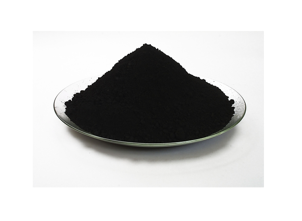
Physical Properties
| Av. Particle Size | 1.5 - 3.0 | 4.0 - 6.0 | 6.0 - 9.0 | 9.0 - 15.0 |
| F.S.S.S(Mm) Apparent density g/cc. |
2.2 - 3.0 | 3.0 - 4.0 | 3.8 - 5.8 | 4.0 - 6.0 |
| Chemical Composition | ||||
|---|---|---|---|---|
| Tungsten (excluded2O) as W, % |
99.8 Min. | 99.8 Min. | 99.8 Min. | 99.8 Min. |
| Oxygen content as 2O,% | 0.40 Max. | 0.30 Max. | 0.30 Max. | 0.25 Max. |
| Iron as Fe,% | 0.05 Max. | 0.05 Max. | 0.05 Max. | 0.05 Max. |
| Molybdenum as Mo,% | 0.03 Max. | 0.03 Max. | 0.03 Max. | 0.03 Max. |
| Silicon as Si,% | 0.003 Max. | 0.003 Max. | 0.003 Max. | 0.003 Max. |
| Sodium as Na,% | 0.003 Max. | 0.003 Max. | 0.003 Max. | 0.003 Max. |
| Potassium as K,% | 0.001 Max. | 0.001 Max. | 0.001 Max. | 0.001 Max. |
| Calcium as Ca,% | 0.002 Max. | 0.002 Max. | 0.002 Max. | 0.002 Max. |
Other grains sizes are available upon request.
Principal Application
These powder are mostly used in the manufacture of diamond segments by hot pressing as additives in the metal matrix to improve the diamond reteation and cutting ability. Also these powder are used to manufacture electrical contact and tungsten carbide powders.
Packing
1 kg and 5 kg packing in polythene bags.
Fused Tungsten Carbide Powders(FTC)

Chemical Composition
| Tungsten as W, % | 95.0 - 97.0 | 95.0 - 97.0 |
| Total carbon as C TOT, % | 2.5 - 3.5 | 2.5 - 3.5 |
| Free carbon as C FREE, % | 0.1 Max. | 0.1 Max. |
| Iron as Fe, % | 0.4 Max. | 0.4 Max. |
| Cobalt as Co, % | - | 0.2 - 0.4 |
- Mesh size as per ASTM/MBSS standard, -20 to +600 as per requirement of the customer.
- Sieve Analysis can be provided as per the required size on request.
Principal Applications
These powders have very high hardness and outstanding abrasion resistance. These are used to manufacture diamond tools for cutting of very abrasive materials.
F.T.C is also useful to :
- Manufacture self lubricating sintered bearing.
- Manufacture contact material of current flow performance in arc resistance, adhesion resistance & contact resistance.
- Manufacture brushes application in electric motors & generators.
- Friction material for brakes.
Packing
1 kg and 5 kg packing in polythene bags.

